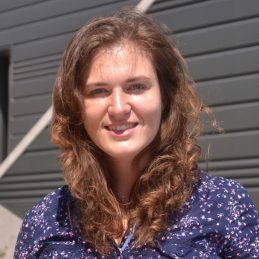
- This event has passed.
6/17/19: Anika Kuczynski

Please join us for a Great Lakes Seminar Series presentation:
Time: 10:30-11:30 am EDT
Location: NOAA Great Lakes Environmental Research Laboratory, Lake Superior Hall (Directions)
Presenter: Anika Kuczynski, National Institute of Water & Atmospheric Research Ltd (NIWA) in Christchurch, New Zealand
Title: Modeling the Canopy Effect in the Great Lakes Cladophora Model v3
About the presentation: “Modeling the Canopy Effect in the Great Lakes Cladophora Model v3”
For decades, nutrient-driven nuisance algal growth has wreaked havoc in the lower four Great Lakes. Empirical and mechanistic models have long been used to set open-lake nutrient targets and manage nutrient loads to meet those targets. Although there was some success in mitigating nuisance algal growth, ecosystem perturbations in the last two decades have resulted in a Cladophora resurgence. We offer improvements in the mechanistic Great Lakes Cladophora Model in version 3 (GLCM v3) to better inform management. Like earlier versions (GLCM v1 and v2), the model simulates algal biomass density (g dry mass m-2) and stored (cellular) phosphorus content (P as % dry mass) over the growth period. Earlier versions of the GLCM treated the algal mat as a lumped system, using the logistic growth model with a prescribed maximum biomass density coefficient to simulate the carrying capacity effect. While that approach resulted in a good model fit to biomass observations (normalized root mean square error, NRMSE =17.8%, and percent bias, PBIAS = -11.0%), it was not based on identified ecological mechanisms and empirical specification of the coefficient was undermined by significant intra- and inter-site variability. Two major advances are presented: 1) an improved characterization of the light and temperature response surfaces driving photosynthesis and respiration and 2) a segmented canopy approach for simulating the effect of self-shading (carrying capacity) on growth. In the GLCM v3, biomass accrual is mechanistically governed by light attenuation through the canopy and model agreement with observations improved (NRMSE = 13.6%, PBIAS = -5.7%). The introduced vertical extinction coefficient for light passing through the mat included in GLCM v3 may be directly measured and offers much less freedom as a tuning parameter than the prior approach using a maximum biomass coefficient. The GLCM v3 is a more mechanistic and robust tool than previous versions, designed to aid management of nuisance algal growth.
About the speaker: Dr. Anika Kuczynski is a water quality modeler at the National Institute for Water and Atmospheric Research (NIWA) in Christchurch, New Zealand. She has experience in using and developing field, laboratory, and modeling approaches to inform river and lake management regarding nuisance algal growth. Anika’s background is in water quality modeling in the Laurentian Great Lakes and she is interested in mechanistic stream periphyton (attached algae) modeling and nutrient cycling. The focus of Dr. Kuczynski’s PhD (in environmental engineering at Michigan Tech) was mechanistic modeling of nuisance Cladophora (filamentous green alga) in the Great Lakes. At NIWA, Anika’s focus is on monitoring and modeling periphyton growth in streams, seeking to develop tools that can be applied by regional councils to work toward meeting national water quality standards. She currently leads a team in developing and testing methods using fixed and aerial (drone) red-green-blue and multispectral imagery to monitor stream periphyton cover and biomass. Clients and stakeholders who have received her work include the Northeast Ohio Region Sewer District, the Upstate Freshwater Institute, the Ministry of the Environment and Climate Change (Canada), the Town of Ajax (Canada), Mercury Ltd. (hydropower company, New Zealand), Environment Canterbury (regional council, New Zealand), and the Ministry of the Environment (New Zealand).
**Registration is not required, however please note important visitor information**
Important Visitor Information
All in-person seminar attendees are required to receive a visitor badge from the front desk at the NOAA Great Lakes Environmental Research Laboratory facility. Seminar attendees need to present a valid U.S. photo ID or green card. If you are a Foreign National, advance notification of at least 48 hours is needed so that security guidelines are followed. You will need to present your passport (a copy will NOT work). For questions regarding building access, or assistance in obtaining Foreign National clearance, please call 734-741-2394. Email contact: [email protected]
_____________________________________________________
Questions? Contact Mary Ogdahl: [email protected]
Visit ciglr.seas.umich.edu for more information.


